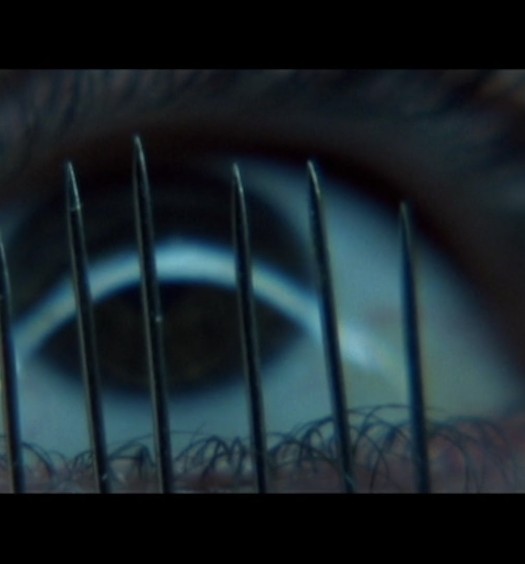At the best of times, the topic of remakes is a highly-charged one amongst horror fans. For every one that is highly lauded or successful, there are a dozen more ranging anywhere from divisive to unnecessary. I’ve never been one to outright dismiss a remake on principle, though I’ll admit to coming awfully close with last year’s update of Suspiria—and that would have been my loss.
When a remake of David Cronenberg’s Rabid was announced years ago, my immediate response was one of trepidation. It’s difficult remaking and modernizing a 40-plus year old film while retaining what made it stand out in the first place, and even more so when the original was made by a master of the genre. Jen & Sylvia Soska’s 2012 film, American Mary, proved they had a knack for disturbing physical horror. The sisters spoke with reverence about Cronenberg’s 1977 original, and buzz behind the film was positive. I went in hoping that we’d have a solid new entry in the body horror canon.
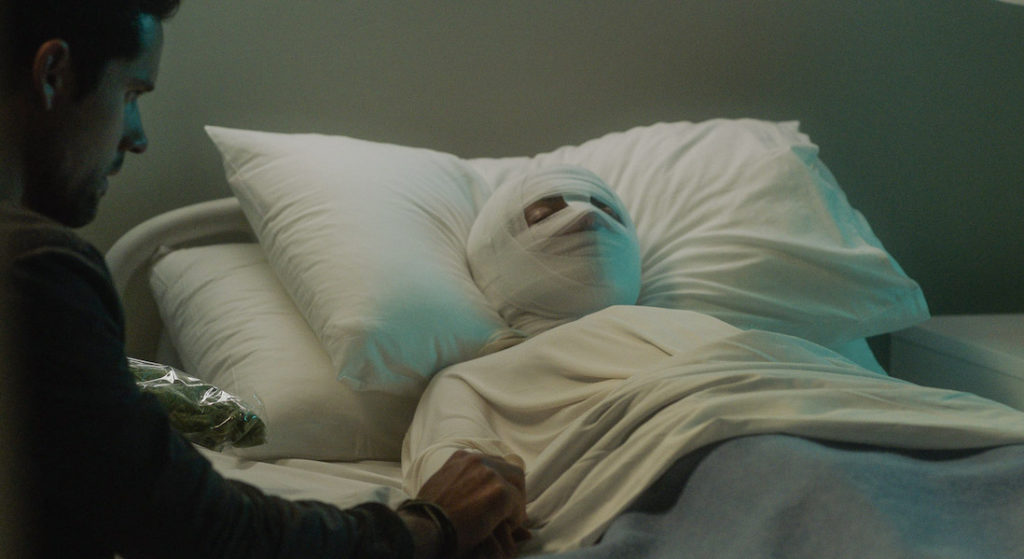
“The Soska Sisters’ reimagining of Rabid sets the story against the backdrop of the fashion industry.”
Rabid begins with a quick introduction, showing Rose (Laura Vandervoort) heading to work on her scooter, while dodging dogs and oncoming traffic. A voice offscreen delivers a series of extremely loaded questions. “Why do we keep remaking old trends? How are we breathing new life and soul? Are we adding something new? If there is no soul, there cannot be life. So, do we cater to the masses, or do we create art only for the few who dare experience it?” I immediately felt the film beating me over the head as it tried making its point.
The Soska Sisters’ reimagining of Rabid sets the story against the backdrop of the fashion industry. Rose is a seamstress working at the “Haüs of Günter” [sic]. She’s a bit shy and unassuming, though she dreams of something more. Günter is a demanding taskmaster, and thinks nothing of humiliating Rose in front of her coworkers in an effort to drive home the theme of Schadenfreude, which is also the name of his latest line of couture.
“Rose gets into an accident that leaves her battered and broken.”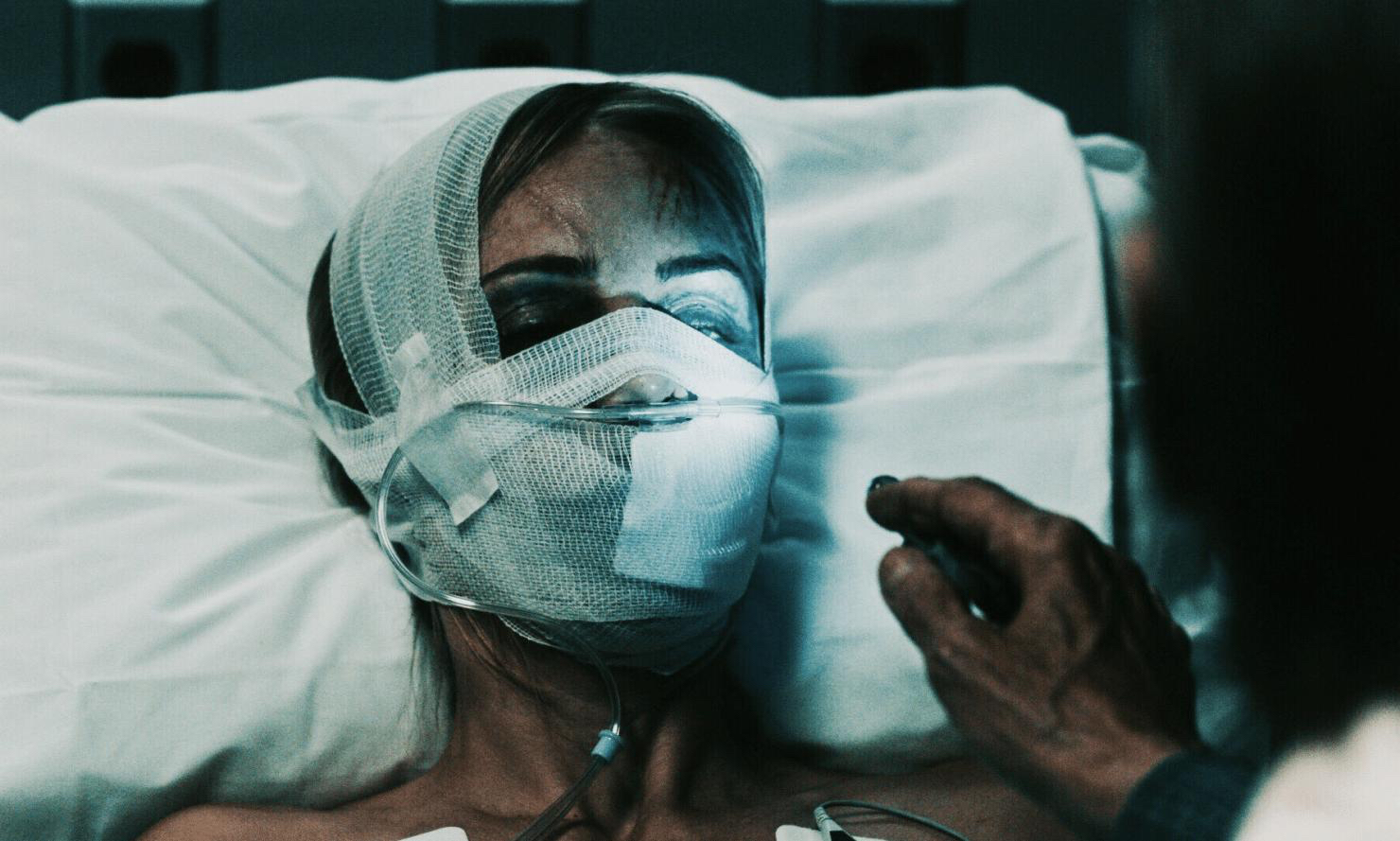
One of Rose’s coworkers, a photographer named Brad (Benjamin Hollingsworth), asks Rose to be his date to a party after a fashion event. Rose is surprised, but accepts. When she arrives at the party, Rose immediately feels out of place. She’s dressed for the occasion, but is hassled at the door and just doesn’t seem to fit amongst the glitz and glamor. After overhearing an unfortunate conversation in the bathroom, Rose leaves alone.
She awakens in the hospital, with her coworker and friend Chelsea by her side. The attending physician, Doctor Keloid (Stephen McHattie, in little more than a cameo), tells Rose that she’s been out for a week. Her jaw has been wired shut, her face has been damaged, and a large portion of her intestines have been removed. She’s also lost her job, her place to live, and her independence. Upon seeing her face, Rose feels that she is “a monster.” Dr. Keloid mentions that it will be several weeks before she can leave, and recommends that she avoid mirrors.
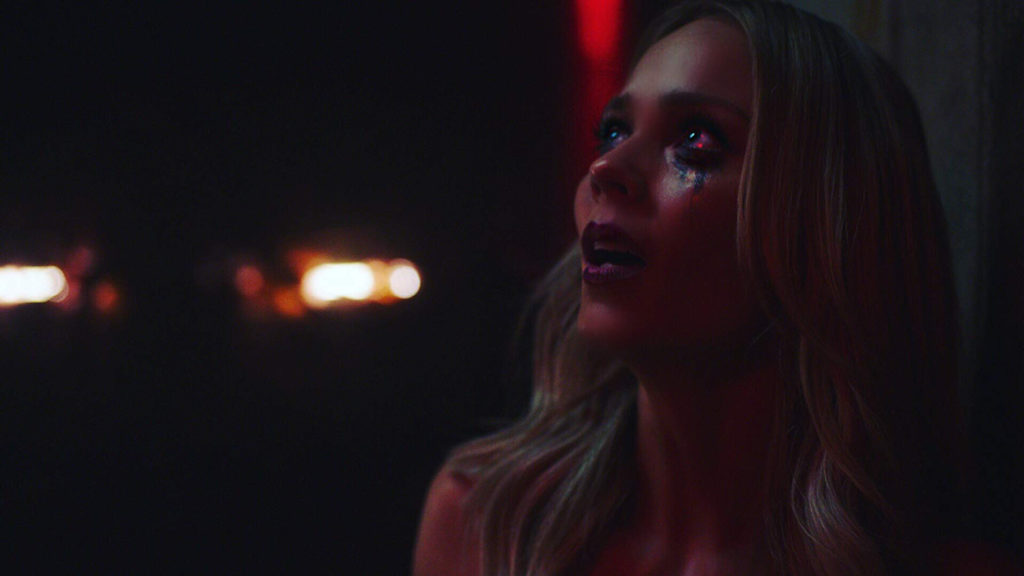
Rose’s world, and the world at large, begins crashing down around her.
After being released, Rose moves in with a friend and struggles to come to terms with her new reality. Rose is referred to the Burroughs Clinic, run by the curiously named William Burroughs. Doctor Burroughs is an advocate of transhumanism, and a pioneer in experimental stem cell therapy. He offers Rose free experimental medical care, and a chance at a normal life. But this is a horror movie, and normal is not the order of the day.
When Rose is released from the clinic, her physical damage has been erased. She no longer even needs to use her glasses. Soon strange appetites overtake Rose, and the avowed vegetarian begins craving meat… and blood. As Rose indulges in these new cravings, a strange sickness sweeps across the populace. The disease is supposedly similar to rabies, but it seems to cause strange mutations and reanimates the dead. Rose’s world, and the world at large, begins crashing down around her.
When discussing the remake, the Soska Sisters stated that they viewed their film as “a continuation of the thoughts and conversation David started with his original piece and modernized through a female perspective.” Whether you feel they were successful will depend on a number of different factors. Ultimately, I did not.
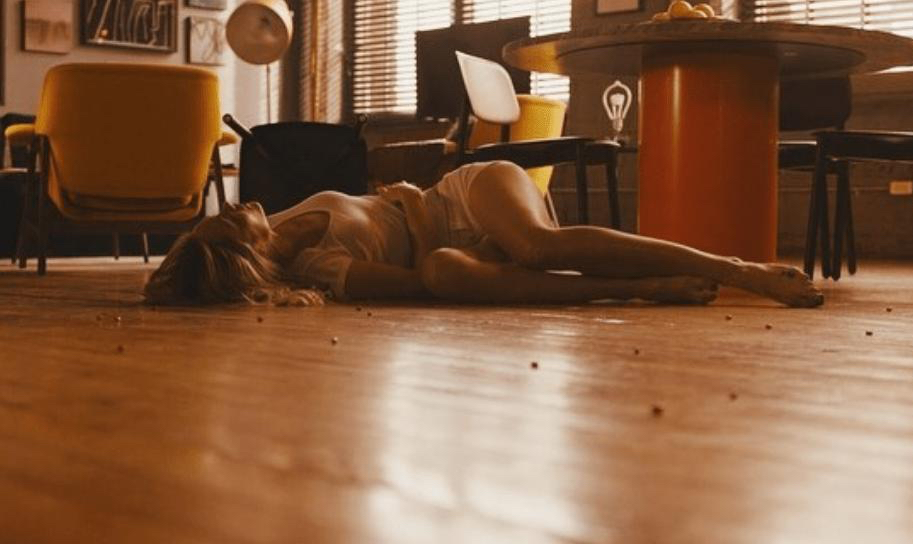
“[Rabid] injects more modern themes into the story but doesn’t fully explore them.”
The 2019 version of Rabid is undoubtedly a strange beast. It injects more modern themes into the story but fails to fully explore them. The film has no likable or redeemable characters, leaving viewers without anyone to root for. The people populating the film are almost all some combination of vapid, conniving, or comically villainous. Laura Vandervoort’s Rose is the closest thing we get to a protagonist, but even she doesn’t carry the emotional weight that Marilyn Chambers brought to the role in Cronenberg’s original. Strange character choices abound, whether it’s Rose’s wallflower persona basically consisting of a Clark Kent disguise, or Mackenzie Gray’s portrayal of Günter as something of a cross between Jack White and Tommy Wiseau.
The scope and vision of the film also left me scratching my head. Cronenberg’s film was made over 40 years ago on an estimated budget of $530,000 (Canadian). The reported budget for the 2019 version was $5,000,000. Cronenberg’s body horror effects were relayed in quick glimpses, and are still effective both for what they show and what’s left imagined. Some of the effects in the 2019 film, such as Rose’s post-accident visage and her surgery at the Burroughs Clinic, are noteworthy. But many of the more fantastical effects stretch the suspension of disbelief to its breaking point, often times missing the mark completely.
Despite its tiny budget, Cronenberg’s film felt broad in scope. The story took place in numerous locales, from the Keloid Clinic, to quiet country roads, to crowded subway trains. The limits of Cronenberg’s budget never showed through on screen. By comparison, the entirety of the Soska Sisters’ remake feels small and limited. Many of the settings feel as if they’re all in the same studio. Aside from certain moments of language and gore, the whole affair feels like something that would be right at home on a mid-tier television channel, like Syfy or the CW. Perhaps the biggest betrayal of the source material comes at the film’s end, which trades the original’s grim gravitas for a twist that feels cheap and unearned.
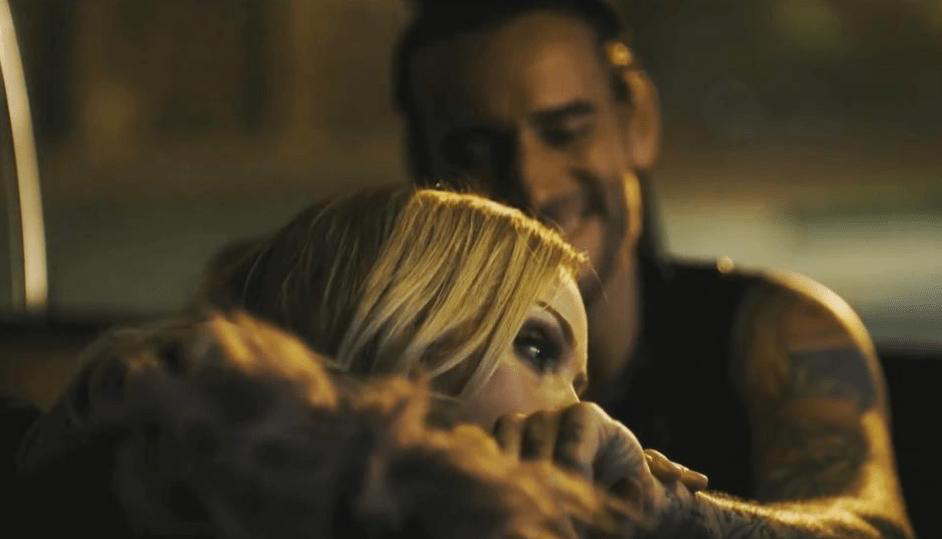
“… it all seems superficial and unnecessary.”
Rabid contains a number of surface-level connections to Cronenberg’s filmography. A briefly-seen character shares the name of the original Rabid’s main doctor. A man in a Santa suit is gunned down. The red silk surgical scrubs from Dead Ringers make an appearance. Pictures on a shelf include Lynn Lowry, who starred in Shivers. The original film’s tagline (“Pray it doesn’t happen to you…”) is heard over a radio broadcast. Much like the fashion world setting slapped on the story, it all seems superficial and unnecessary. For some inexplicable and completely unrelated reason, the nurses from Silent Hill pop up in a dream sequence.
Full disclosure: I struggled with this review. I’m not someone who automatically writes off remakes. I try to go into every movie wanting to find something to enjoy. I’ve been a fan of Cronenberg for many years, and was excited for a new take on the themes his earlier films explored. Unfortunately, I can’t classify the Soska Sisters’ Rabid as anything other than a disappointment.
Rabid is available in limited theaters and on digital platforms as of today.
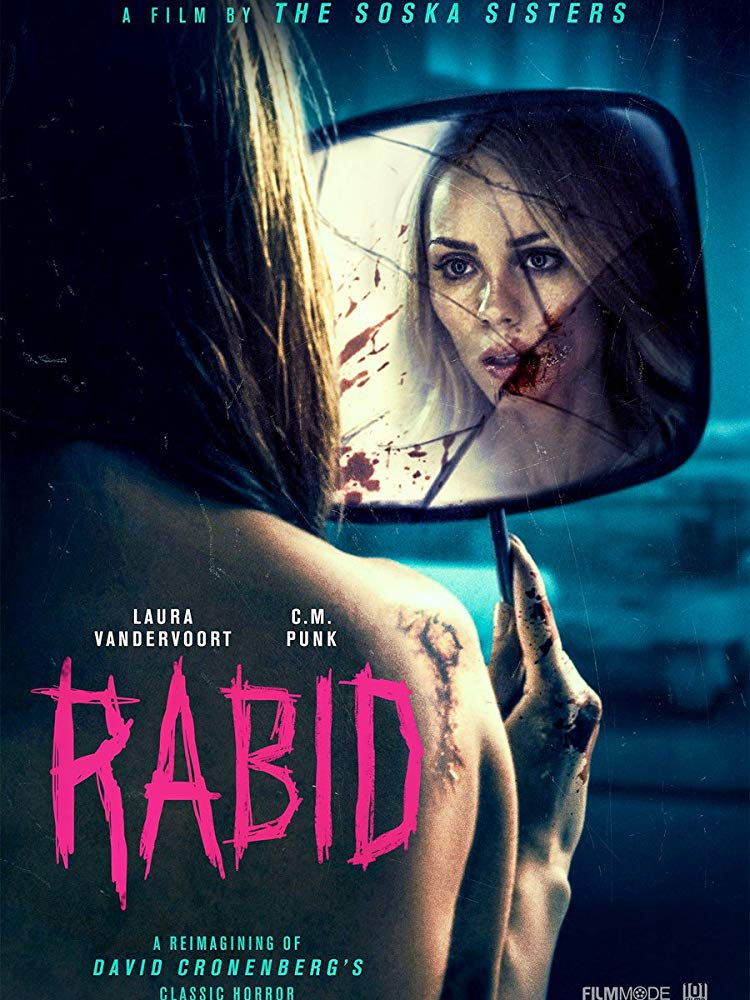
Despite gruesome special effects, the Rabid remake ultimately disappoints
Mediocre.
Rabid proves just how difficult pulling off an effective remake can be. Despite the strength of the source material, the Soska Sisters’ modern retelling falls short. Rabid gives the story a superficial facelift without diving deeper into the troubling themes of Cronenberg’s original film.


